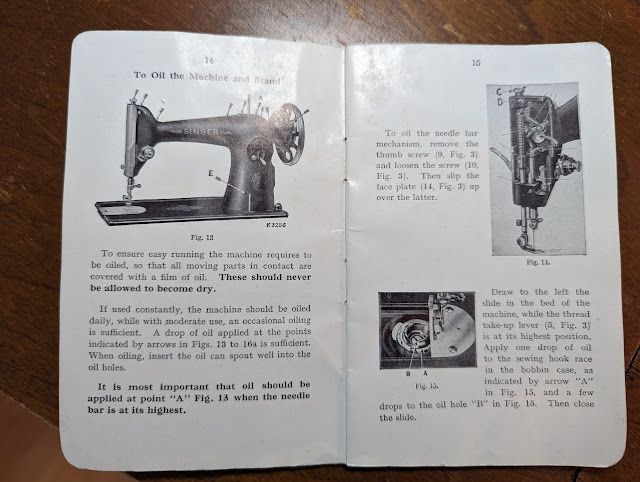Over the last year or so I've been watching the conversations on the social media sites about the hidden costs of fast fashion, from the exploitation of garment workers to the environmental cost of cheaply-made clothing that ends up in landfills after only a few wearings.
I've never been a fashionable person. I don't have the mind-set for it, and I've never really had the money, so while I can observe the social and advertising pressures that drive people to purchase fast fashion, I don't really understand them.
My parents have vivid memories of the stories the adults in their lives told them of the deprivations of the Great Depression. They also remember the shortages of World War II, so they have a good sense of what you need to get by versus what's nice to have, and they passed this along to their kids. Largely, I buy or make the clothing I need in order to present myself to the world as a decent, rational human being. Now and again I'll buy or make something just for the fun of it and let me tell you, I've gotten a lot of joy out of these garments.
A few weeks ago I lost a button off a shirt I made in 1998 and wore several times a month until quite recently. I had spare buttons put away, so in a couple of minutes one of my favorite shirts was ready to wear again. It's become a little too faded to wear outside the house, but it's fine to wear around the house on a chilly day over a purple t-shirt. And those bright purple grapes just make me so happy.
Should everybody know how to sew on a button? Absolutely. Maybe those little sewing kits we all steal from our hotel rooms should also come with instructions on how to thread a needle, repair a length of hem, and sew on a button. This would be at least as useful as the Gideon Bible.
Should everybody make their own clothes? That's not realistic for a number of reasons. But I think that everybody should know that making clothes is an option. Everybody should know how fabric and clothes are made and how to distinguish good quality.
We've been talking about this for over a hundred years. The book Clothing Choice, Care, Cost was published in 1920 in response to high clothing costs after World War I.








